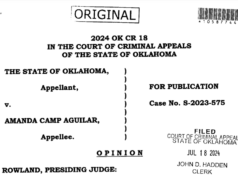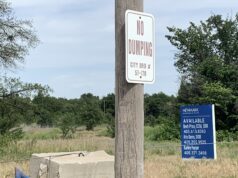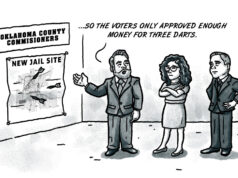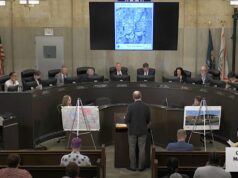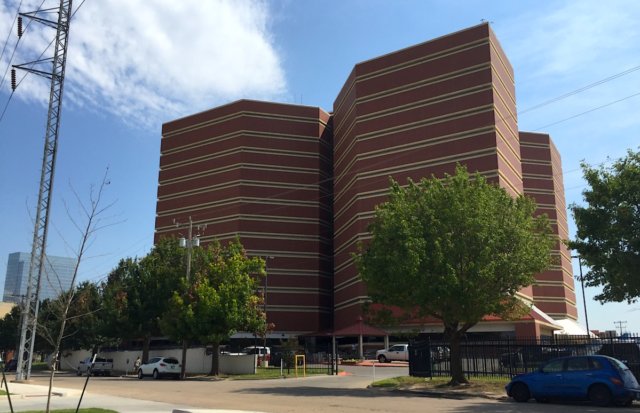
In the movie Groundhog Day, self-absorbed TV weatherman Phil Conner keeps reliving the same day over and over without consequences. “What would you do if you were stuck in one place and every day was exactly the same, and nothing you did mattered?” he ponders.
It occurs to me that the saga of the Oklahoma County Jail is eerily similar to Conner’s predicament. The predicted calamities oft used by policy makers to attempt to gin up public sentiment for a yet-to-be-defined solution have never jelled. The consensus is something must be done, but nothing changes. In other words, we relive the same jail reality over and over without consequences.
I am aware that an advisory council is currently working on increasing cooperation and efficiencies between the courts, prosecutors and policing agencies. I am pleased that work on reducing admissions and recidivism rates, improving data collection and improving addiction and mental health treatment in the jail is underway. You can read that report here.
The report linked above examines the uses of the current jail, a just and wise inquiry. While the use of the current facility is worthy of the examination, the facility itself is the attention-getter. Even if the recommendations of the task force are adopted (and that’s a huge if), few contend the physical jail can adapt to a more modern mission.
Oklahoma County Jail a poison pill for politicians
Let’s see if we can generally agree on a premise: Replacing the jail is some modern-day third rail for policymakers. Why? The Oklahoma County Jail is a worn-out building. It is unsafe and a management nightmare. The policymakers in Oklahoma County know that, and the citizens know that, but the policymakers are loathe to roll out real solutions lest they touch that third rail and kiss their careers goodbye. Talking incessantly (but doing functionally nothing) about the problem beats getting politically electrocuted for proposing tax increases and advocating for new jail.
In fairness to the policymakers, bureaucrats and trade-group folks who have been grappling with this albatross for years, the public will need to bear the burden of a reasonable solution. Politicians will define that sentence to mean “spending taxpayer money to improve the plight of prisoners without risking political harikari.”
The only way to engage the public in a joint effort at downing the bitter pill is to explain the harsh realities honestly. Engaged citizens need to know precisely what is at stake here. Nobody is moved by the threat of a federal takeover. This tale has been repeated so often that, even if it were true, that hardly anyone actually believes it. Plus, there are far more terrifying stories out there right now than the comfort level of prisoners in the county jail.
Some may take issue with that statement, but the section reserved for politicians wanting to spend big bucks on a newer, safer and more humane jail has a lot of empty seats.
Three questions policymakers should ask the public
Advice for policymakers on this topic is simple. Try shooting straight with today’s audience and engage them by sharing the facts: the facts about money, THEIR money. You’ll get their attention by answering three simple questions about public money and the county jail, and not in the usual long-winded bureaucratic language from some blue-ribbon task-force report that puts citizens to sleep.
First, tell the engaged public about the jail, with an emphasis on how it currently performs compared to its intended design. It’s a building that’s supposed to be safely and reasonably housing a limited number of inmates, correct? I’m not asking what it was designed to do in 1989, I’m asking what it can reasonably do NOW. Based upon the studies I’ve read, there will need to be some substantial renovations.
Second, tell people what must be spent to immediately update the jail so it can safely and properly house the number of inmates established in question one.
Third, tell them the cost to do the job over the next five to 10 years.
This isn’t rocket science, but this isn’t some DIY project either. No citizen task forces or other busy groups. Just select a firm with national standing to assess the facility and provide the citizens of the county some recommendations and conclusions to help everyone pick the best course of action.
And another thing …
One other thing: Most voters will spend thousands more on a kitchen renovation or a new bass boat or even a new coffee maker than they’d have to pitch in on for a new jail. Respect that; if the report is more than five pages or so, you’re disrespecting their time and intelligence.
Ben Franklin is purported to have said, “Tell me, and I forget. Teach me, and I remember. Involve me, and I learn.”
So please, involve the public in a way that matters, and please move faster than Phil Conner. Everyone is getting really tired of this movie.










